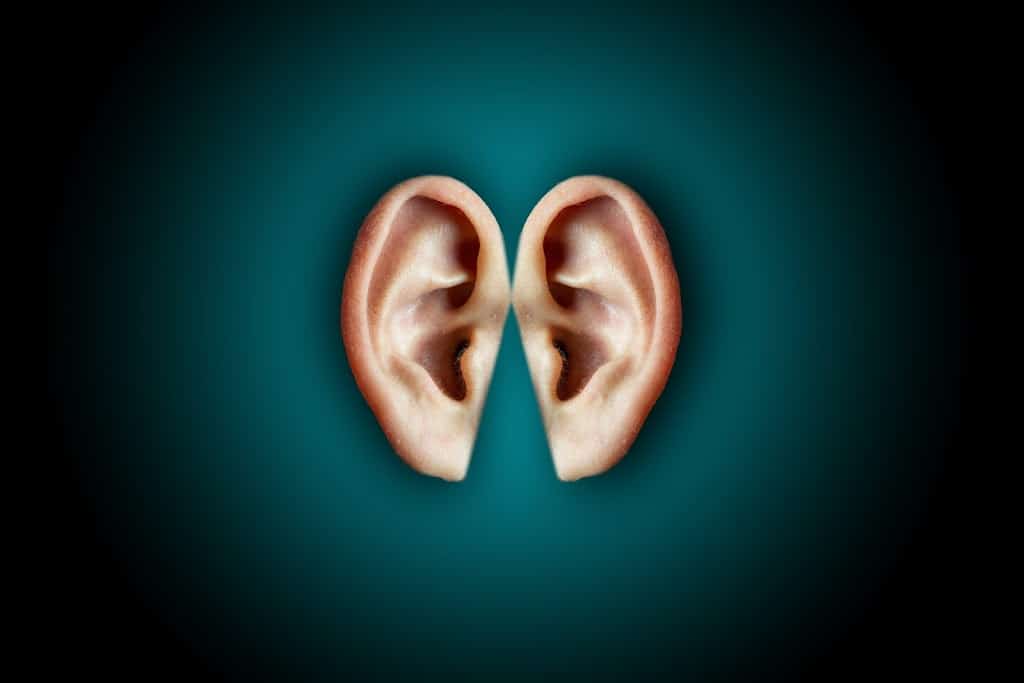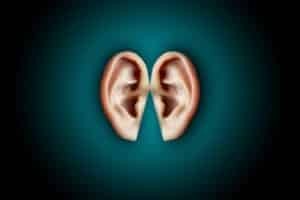Hearing loss is a prevalent condition that affects millions of people worldwide. Whether you or someone you know is experiencing hearing difficulties, understanding the basics of hearing loss is essential for better communication and a fulfilling life. This article provides valuable and complete information about the causes, prevention, available treatments, and communication strategies associated with hearing loss.
What is Hearing Loss?
Hearing loss is a condition characterized by a partial or complete inability to hear sounds. It can affect one or both ears and can range in severity from mild to profound. When someone experiences hearing loss, it becomes challenging for them to perceive and understand sounds, including speech and environmental noises.
What Are The Causes of Hearing Loss?
Hearing loss can have various causes, ranging from genetic factors to environmental and lifestyle influences. Understanding the different causes of hearing loss can help identify potential risks and take appropriate measures for prevention. Here are some common causes of hearing loss:
Aging (Presbycusis):
Age-related hearing loss, known as presbycusis, is a natural and gradual decline in hearing abilities that occurs as a person gets older. It typically affects both ears and is primarily caused by changes in the inner ear structures and damage to the hair cells responsible for detecting sound vibrations.
Exposure to Loud Noise:
Prolonged or repeated exposure to loud noises can lead to noise-induced hearing loss. This can happen due to occupational exposure (e.g., working in construction, manufacturing, or entertainment industries) or recreational activities with high noise levels (e.g., attending concerts, using headphones at high volumes). Intense noise damages the delicate hair cells in the inner ear, resulting in permanent hearing loss.
Genetic Factors:
Some forms of hearing loss are hereditary, meaning they are passed down through generations. Genetic mutations can affect the development and function of the inner ear, leading to congenital hearing loss present at birth or progressive hearing loss that emerges later in life.
Ototoxic Medications:
Certain medications, such as certain antibiotics (e.g., gentamicin, neomycin), chemotherapy drugs, and high doses of aspirin, have the potential to damage the inner ear and cause hearing loss. It is important to discuss potential ototoxic effects with healthcare providers when prescribed such medications.
Ear Infections:
Chronic or untreated ear infections, particularly in the middle ear, can cause hearing loss. Infections can lead to fluid accumulation, inflammation, and damage to the delicate structures involved in sound transmission. Prompt treatment of ear infections can help prevent potential complications.
Earwax Buildup:
Excessive or impacted earwax can block the ear canal and interfere with sound conduction, leading to temporary hearing loss. Cleaning the ears improperly, using cotton swabs, or inserting objects into the ear can push the wax deeper, exacerbating the problem.
Trauma or Injury:
Head trauma or injury that affects the ears or the auditory system can result in hearing loss. A sudden loud noise or a physical injury can damage the eardrum, middle ear bones, or the delicate structures within the inner ear.
Diseases and Medical Conditions:
Certain medical conditions and diseases can contribute to hearing loss. These include Ménière’s disease, autoimmune inner ear disease, otosclerosis (abnormal bone growth in the middle ear), acoustic neuroma (a benign tumor on the auditory nerve), and some viral or bacterial infections that affect the ears.
Other Factors:
Other factors that can contribute to hearing loss include smoking, high blood pressure (hypertension), diabetes, obesity, and certain cardiovascular conditions that affect blood flow to the ears.
It’s important to remember that some causes of hearing loss are preventable, such as protecting ears from loud noises and seeking early treatment for infections or underlying medical conditions. Regular hearing screenings and adopting healthy hearing practices can help identify potential issues and address them proactively. If you suspect hearing loss, it is recommended to consult with an audiologist or a healthcare professional specializing in hearing care for a comprehensive evaluation and appropriate management.
What Are The Prevention of Hearing Loss?
Preventing
hearing loss is crucial for maintaining good auditory health and
preserving hearing abilities. While some causes of hearing loss may be
unavoidable, there are several preventive measures that can
significantly reduce the risk of hearing damage. Here are some effective
strategies for preventing hearing loss:
- Protect Your Ears from Loud Noises:
Exposure to loud noises, whether occupational or recreational, is a
common cause of noise-induced hearing loss. To prevent this type of
hearing loss:
Use hearing
protection: Wear earplugs or earmuffs in noisy environments, such as
construction sites, factories, or concerts. Choose hearing protection
devices that provide adequate noise reduction and fit properly.Follow
safe listening practices: When using headphones or earphones, keep the
volume at a moderate level and take regular breaks. Avoid listening to
loud music for prolonged periods, especially in noisy environments.Be
aware of environmental noise: If you encounter loud noises in your
daily life, try to minimize exposure. Move away from sources of loud
sounds or use barriers to reduce noise levels.
- Maintain Ear Hygiene: Proper care and maintenance of your ears can help prevent certain types of hearing loss:
Avoid
inserting objects into your ears: Do not use cotton swabs, hairpins, or
any other objects to clean your ears. This can push wax deeper into the
ear canal or cause injury.If you experience excessive earwax buildup, consult a healthcare professional for safe removal.
- Take Precautions in the Workplace: If you work in a noisy environment, take steps to protect your hearing:
Use hearing protection devices provided by your employer, such as earplugs or earmuffs.
Follow safety guidelines and regulations regarding noise exposure limits and use of protective equipment.
Participate in regular hearing screenings and assessments to monitor any changes in your hearing abilities.
Be Mindful of Medications:
Some medications can have potential ototoxic (toxic to the ear) effects
and contribute to hearing loss. If you are taking medications that
carry a risk of hearing damage, discuss it with your healthcare
provider. They may explore alternative options or closely monitor your
hearing during treatment.Maintain Overall Health: Certain health conditions and lifestyle factors can impact your hearing health. Here are some practices to consider:
Control
chronic health conditions: Manage conditions like diabetes and high
blood pressure, as they can contribute to hearing loss.Quit smoking: Smoking damages blood vessels and reduces blood flow to the ears, increasing the risk of hearing loss.
Stay
physically active: Regular exercise improves overall cardiovascular
health, which is beneficial for maintaining healthy blood flow to the
ears.
- Practice Safe Listening Habits: Be mindful of your listening habits and create a healthy auditory environment:
Keep volumes at moderate levels when listening to music, watching TV, or using personal audio devices.
Use noise-cancelling headphones or earphones to block out background noise, allowing you to listen comfortably at lower volumes.
Be cautious with children’s exposure to loud sounds and educate them about safe listening practices.
- Regular Hearing Screenings:
Schedule periodic hearing evaluations with an audiologist or a
healthcare professional specializing in hearing care. Regular screenings
can detect early signs of hearing loss and allow for timely
intervention.
Remember, prevention is
key when it comes to hearing loss. By adopting these preventive measures
and promoting awareness about healthy hearing practices, you can
minimize the risk of hearing damage and maintain good auditory health
throughout your life.
What Are the Treatment Options of Hearing Loss
There are several treatment options available for individuals with hearing loss, depending on the type, severity, and underlying cause of the condition. The goal of treatment is to improve hearing abilities, enhance communication, and minimize the impact of hearing loss on daily life. Here are some common treatment options:
Hearing Aids:
Hearing aids are small electronic devices worn in or behind the ear. They amplify sounds and make them easier to hear for individuals with varying degrees of hearing loss. Modern hearing aids come in different styles and offer advanced features such as noise reduction, directional microphones, and wireless connectivity to compatible devices.
Cochlear Implants:
Cochlear implants are surgically implanted devices that are used for individuals with severe to profound sensorineural hearing loss who do not benefit from hearing aids. They bypass damaged parts of the inner ear and directly stimulate the auditory nerve, providing a sense of sound. Cochlear implants consist of an external speech processor and an internal electrode array.
Assistive Listening Devices (ALDs):
ALDs are devices that help individuals with hearing loss communicate more effectively in specific listening situations. These include devices like FM systems, captioned telephones, amplified telephones, and personal sound amplifiers. ALDs can enhance sound quality and reduce background noise, making it easier to understand speech.
Middle Ear Implants:
Middle ear implants are surgically implanted devices that bypass the middle ear and directly stimulate the structures of the inner ear. They are an alternative to hearing aids for individuals with certain types of hearing loss, such as those with conductive or mixed hearing loss, or those who cannot wear traditional hearing aids due to ear canal issues.
Surgical Interventions:
In some cases, surgical interventions may be necessary to correct specific causes of hearing loss. These can include procedures such as tympanoplasty to repair a perforated eardrum, stapedectomy to treat otosclerosis, or surgical removal of tumors that affect hearing, such as acoustic neuromas.
Communication Strategies and Therapy:
For individuals with hearing loss, communication strategies and therapy can be beneficial in improving communication skills and managing the challenges associated with hearing loss. This can involve learning techniques such as lip reading, speech reading, and sign language. Speech therapy or auditory training may also help individuals make the most of their residual hearing.
It’s important to note that not all types of hearing loss are reversible through treatment. The effectiveness of treatment options may vary depending on individual factors, including the type and severity of hearing loss, overall health, and personal preferences. An audiologist or a healthcare professional specializing in hearing care can evaluate the specific needs of an individual and recommend the most appropriate treatment options.
It’s recommended to seek professional advice and guidance to determine the best course of action based on an individual’s specific hearing needs and goals. With advances in technology and ongoing research, treatment options for hearing loss continue to evolve, providing more opportunities for individuals to improve their hearing and enhance their quality of life.
Communication Strategies:
Living with hearing loss can present communication challenges. However, adopting certain strategies can help overcome these difficulties. Clear and direct communication, facing the person while speaking, using visual cues, and utilizing assistive listening devices can greatly enhance communication effectiveness.
What IsThe Impact of Hearing Loss?
Hearing loss can have a significant impact on various aspects of a person’s life. Here are some common areas where hearing loss can have an effect:
Communication:
Hearing loss can make it challenging to communicate effectively with others, especially in noisy environments or when multiple people are speaking simultaneously. It can lead to difficulties understanding speech, following conversations, and accurately perceiving sounds. This can result in misunderstandings, frustration, and feelings of isolation or withdrawal from social interactions.
Relationships and Social Life:
Hearing loss can strain relationships with family members, friends, and colleagues. Communication barriers may lead to misunderstandings, decreased participation in social activities, and feelings of exclusion. People with hearing loss may avoid social situations or gatherings due to the challenges they face in understanding and participating in conversations.
Emotional Well-being:
Hearing loss can have emotional consequences, including feelings of frustration, anxiety, depression, and reduced self-esteem. The strain of constantly straining to hear and the impact on personal relationships can contribute to emotional distress. Individuals may also experience a sense of loss or grieving for the changes in their hearing abilities.
Cognitive Function:
Research suggests a link between untreated hearing loss and cognitive decline. The brain’s ability to process auditory information is closely connected to cognitive function. Hearing loss may increase the risk of cognitive impairment, including issues with memory, attention, and cognitive processing speed.
Work and Academic Performance:
Hearing loss can affect professional and academic performance. Difficulties in hearing and understanding instructions, conversations, and presentations can lead to reduced productivity, job-related errors, and academic challenges. It may also limit career opportunities and advancement in certain fields.
Safety Concerns:
Hearing loss can impact safety awareness and response to auditory cues in the environment. Warning signals, alarms, sirens, or sounds indicating potential danger may go unnoticed, putting individuals at risk in various settings, such as on the road, in workplaces, or during emergencies.
Quality of Life:
Overall, hearing loss can diminish a person’s quality of life. It can limit participation in social activities, hobbies, and leisure pursuits that rely on hearing. It can also hinder enjoyment of music, movies, and other forms of entertainment. Hearing loss may create barriers to fully experiencing and engaging with the world around them.
It’s important to address hearing loss proactively to minimize its impact. Seeking early intervention, such as using hearing aids, assistive listening devices, or other appropriate treatment options, can improve communication, enhance social connections, and support overall well-being. Communication strategies, support from loved ones, and joining support groups for individuals with hearing loss can also play a significant role in coping with the challenges and reducing the impact of hearing loss on daily life.
What Are The Statistics and Awareness of Hearing Loss?
Statistics and awareness surrounding hearing loss highlight the prevalence of the condition and the need for increased understanding and support. Here are some key statistics and information:
Global Prevalence:
According to the World Health Organization (WHO), over 5% of the world’s population (approximately 466 million people) has disabling hearing loss, which refers to hearing loss greater than 40 decibels (dB) in the better ear for adults and greater than 30 dB in the better ear for children.
Age-related Hearing Loss:
Age-related hearing loss, or presbycusis, is a common condition affecting older adults. It is estimated that by the age of 65, one in three individuals has some degree of hearing loss. Among people aged 75 and older, nearly half have disabling hearing loss.
Impact on Children:
Hearing loss can also affect children. The WHO reports that approximately 34 million children worldwide have disabling hearing loss. Early detection through newborn hearing screening and access to appropriate interventions are crucial for their language development and overall well-being.
Untreated Hearing Loss:
Unfortunately, a significant number of people with hearing loss do not seek treatment. The WHO estimates that only around 17% of adults with disabling hearing loss use hearing aids globally. Untreated hearing loss can have a negative impact on communication, mental health, and quality of life.
Occupational Noise Exposure:
Occupational noise exposure is a significant risk factor for hearing loss. The Centers for Disease Control and Prevention (CDC) states that about 22 million U.S. workers are exposed to hazardous noise levels at work. Industries with high rates of noise-related hearing loss include construction, manufacturing, mining, agriculture, and entertainment.
Impact on Mental Health:
There is a growing recognition of the link between hearing loss and mental health. Studies have shown that untreated hearing loss is associated with an increased risk of cognitive decline, depression, anxiety, social isolation, and reduced overall well-being.
Awareness and Support:
Efforts are being made to raise awareness about hearing loss and promote understanding and support. Organizations such as the WHO, the CDC, and various advocacy groups work to educate the public, policymakers, and healthcare professionals about the importance of early detection, treatment options, and hearing loss prevention.
Technological Advancements:
Advancements in hearing aid technology, cochlear implants, and assistive listening devices have significantly improved options for individuals with hearing loss. Digital hearing aids, wireless connectivity, and smart hearing devices offer enhanced sound quality, accessibility, and connectivity to other devices, contributing to better communication and quality of life.
Increased awareness of hearing loss can help reduce stigma, promote early intervention, and ensure access to necessary support and accommodations for individuals with hearing loss. Regular hearing screenings, education about hearing conservation, and addressing the needs of individuals with hearing loss in various settings are vital steps toward a more inclusive and supportive society for those with hearing loss.
Conclusion:
By equipping yourself with knowledge about hearing loss, you can empower yourself and others to navigate the challenges associated with this condition. From understanding the causes and prevention to exploring available treatments and communication strategies, taking proactive steps can help individuals with hearing loss lead fulfilling lives with improved communication abilities. Remember, compassion and understanding play a crucial role in fostering an inclusive society for everyone, regardless of their hearing abilities.







